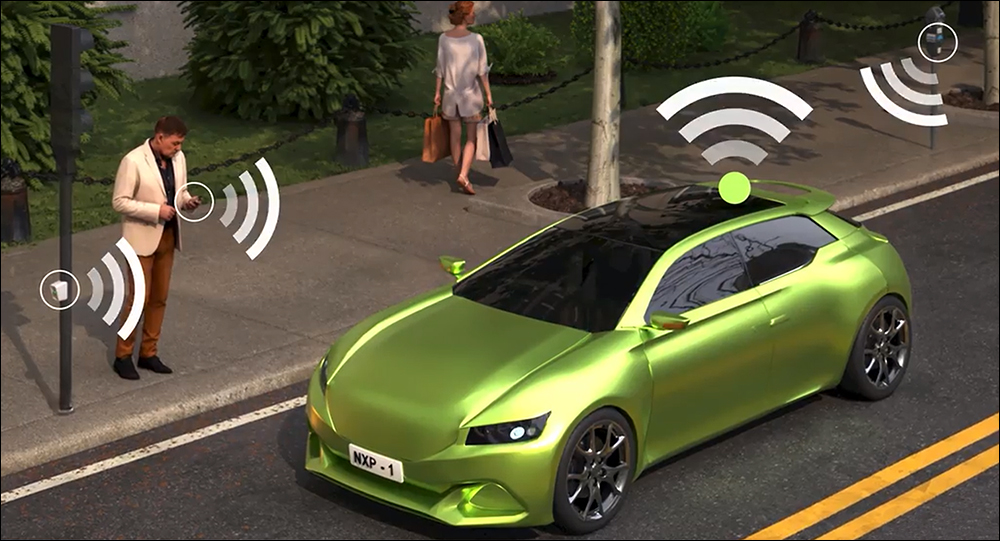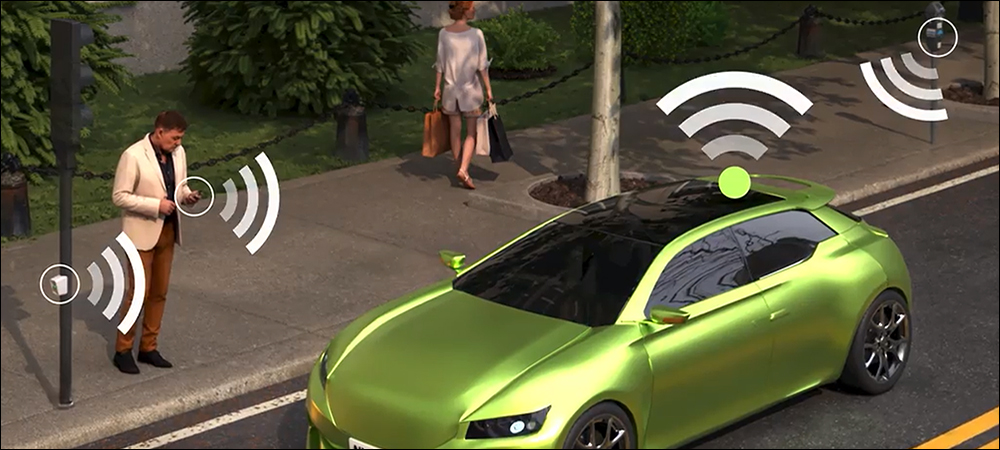- A Growing Number of Independent Wireless Systems
- Modular Approach to Vehicle Connectivity
- Development Begins Next Year
Carmakers and original equipment manufacturers will soon be working with a new development platform for the automotive industry that is designed to bring all of a vehicle’s wireless connectivity technologies together into a single, more secure platform. NXP Semiconductors‘ OrangeBox integrates the many wireless solutions that are currently being used in new vehicles, within the single connectivity domain controller (CDC).
The OrangeBox’s key features, NXP reports, include its EdgeLock cloud-managed security system, which ensures a trusted and secure hardware platform. That platform can run third-party cybersecurity applications aimed at preventing bad actors from accessing a vehicle digitally or physically via its many connectivity devices, the company explains. It is aimed at providing simplified access to a car’s connected technologies, which could reduce costs for automakers, as well as streamline development. Cars with numerous wireless connectivity features have historically had no unified connectivity domain controller architecture, the company reports.
The OrangeBox is a physical module—it is, in fact, an orange box—that developers can use to create their own single controller, which can combine Bluetooth Low Energy (BLE), ultra-wideband (UWB), Wi-Fi 6 and Bluetooth, among other technologies, whether provided by NXP or other companies, explains Jim Bridgwater, NXP’s global product marketing director for the company’s automotive edge processing product line. The platform will provide a single secure communication access point as wireless transmission technologies continue to proliferate in vehicles, he says.

The platform will provide a single secure communication access point as wireless transmission technologies proliferate in vehicles.
A Growing Number of Independent Wireless Systems
New cars come with a vast array of communication technologies, including infotainment, vehicle access, and access to location-based safety information. The growing number of use cases for car connectivity have been addressed by devices leveraging Wi-Fi and Bluetooth, as well as by technologies such as vehicle-to-everything (V2X). Drivers expect access to handsfree calling and other phone-based features, such as Apple CarPlay and Android Auto, and they use Wi-Fi hotspots in their cars for a variety of other applications as well.
“One challenge which we see,” Bridgwater says, “is that all of these different ways of connecting to the outside world [create] a large surface for cyberattacks.” Each wireless interface into the car could provide security vulnerability. “The more we add these interfaces, the more of those there are.” The increasing number of independent systems in a car also raise challenges around RF coexistence, when multiple wireless technologies operate on the same or similar bands and thus could interfere with each other.
NXP offers a series of design development platforms for the automotive industry, known as BlueBox, GreenBox and GoldBox, all of which are currently being used in vehicles. The GoldBox provides a vehicle networking system’s reference platform for developers, enabling them to create telematics. The OrangeBox adds the layer of a single connectivity domain controller. Without that CDC, Bridgwater says, “It’s almost impossible to have a consistent, next-generation firewall type of technology that’s scanning for malware coming into the car,” from any of the wireless data interfaces.
Modular Approach to Vehicle Connectivity
To simplify systems and increase security, Bridgwater says, the OrangeBox is designed to enable developers to take a more modular approach to the features offered in vehicles. It also enables the RF coexistence of different systems. With the technologies centered around one controller, he explains, it is easier for them to collaborate their transmissions, with a single system transmitting or waiting its turn for another to complete its own transmission.

Jim Bridgwater
The single controller also manages the quality of service onto the time-sensitive networking (TSN) Ethernet network, Bridgwater adds. For instance, existing systems in a vehicle might include some which have a low data rate but are very sensitive to latency (the delay before a transfer of data), such as the broadcast radio or the V2X connection. Other systems might require a high data rate but might not be so sensitive to latency, such as streaming YouTube over a 5G network.
The OrangeBox, NXP reports, is designed to make it simpler for a car to have what the company calls cloud orchestration of wireless connectivity and firewall software, meaning a single point on which it can receive the latest firmware or patches, all managed in the cloud. The OrangeBox consists of an NXP i.MX 8XLite processor, which runs the application software, as well as several wireless interfaces, including a third-party 5G modem GNSS module, Ethernet connectivity, V2X communication, a broadcast radio, Wi-Fi, Bluetooth and multiple sensors.
The system also includes a secure element, along with a 32K MCU that manages some of the secure car access technology. It additionally comes with a BLE and UWB module for secure car access. V2X is typically employed in vehicles for a system to communicate directly with other cars and with roadside units—for instance, to provide safety information or roadside assistance. It can warn a driver that there is an icy road ahead, for example, or it can enable trucks to communicate and create a platoon.
Development Begins Next Year
The OrangeBox serves as a development platform that customers can employ to build their own box, which could be installed in the roof or another part of a vehicle. The OrangeBox platform talks to the cloud by cell via modem or Wi-Fi, depending on a network’s availability. NXP expects to offer the OrangeBox to customers in the first half of next year, Bridgwater says, adding, “We have the hardware and we’re working on the software.”
Challenges that developers will need to work around could include latency, since the interfaces for various systems will be moving to a central location within a vehicle. When it comes to the benefits, however, Bridgwater identifies what he considers the killer app: security. “Cybersecurity has become very important in the automotive world,” he states, “but its maturity level is not as high as it could be.” Unlike systems for buildings or homes, cars still lack a unified security gateway for external data traffic.
With the release of the OrangeBox, Bridgwater says, “We’re saying the time has come to put everything in one place and take the best practices from other industries [such as enterprise security], in terms of how you defend against security risks.” The other key value that the solution will deliver, he predicts, is the consolidation of systems to enable software upgrades. “I think this contributes to the software-defined vehicle, because it puts all of the wireless [systems] in one place, with a single processor, and it makes management of software updates more modular.”
Key Takeaways:
- NXP Semiconductors is releasing its OrangeBox connectivity domain controller for developers to create a single solution for automotive manufacturers that integrates wireless systems with a security layer.
- The OrangeBox will be used by developers for OEMs and car manufacturers to build integrated systems into vehicles in the coming two to three years.


